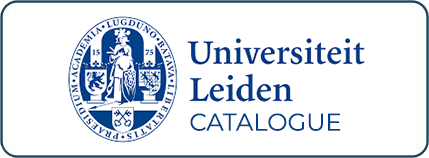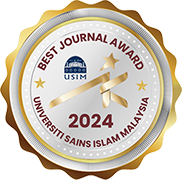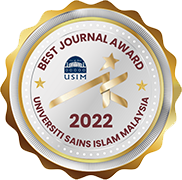THE ROLE OF THE RELIGIOUS SCHOLARS OF FAQIH ALI DATO’ MAHARAJA’S DESCENT IN UPHOLDING SHARIA IMPLEMENTATION IN TERENGGANU
DOI:
https://doi.org/10.33102/mjsl.vol12no1.674Keywords:
Faqih Ali Dato' Maharaja, Terengganu State Constitution, Wan Lineage, religous scholars, joint-courtAbstract
Faqih Ali Dato’ Maharaja is a well-known figure among local historians, particularly among those who study prominent religious scholars in Southeast Asia. His descendants contributed significantly to promoting the sustainability of Islamic teaching in Terengganu. Islam was upheld as the principle of Terengganu's sovereignty, forming the basis of its constitutional system, thus legitimizing the position of Sharia as the law of the land. This was manifested on the Inscribed Stone dated 4 Rejab 702H. Nevertheless, the role of the descendants of Faqih Ali have not been a focal point in academic writing. The paucity of literature and elucidation within this domain serves as the basis for this study. This article aims to investigate the role of prominent religious scholars of Faqih Ali Dato’ Maharaja's descent in upholding the implementation of Sharia in the Terengganu Sultanate until the Independence Day of Tanah Melayu in 1957. This study is qualitative in nature and employs historical research methods. Data were obtained from archival documents, government publications, field research, and secondary sources. Findings show that the preservation of the Sharia legacy in Terengganu since the discovery of the Inscribed Stone was influenced significantly by the substantial contributions of religious scholars who were also the administrators of Faqih Ali Dato’ Maharaja’s descent, evidenced by the legislation of Itqanul Muluk bi Ta'dil al-Suluk in 1911 and its extension, the Terengganu State Constitution. Hence, the practice of Sharia before 1957, was not confined to personal affairs as understood by many; by virtue of the Federal Constitution, the public affairs of Sharia are now entrusted to public authorities at the federal level unless those matters are retained in the state administration.
Downloads
References
A. Samad, A. (eds). (2015). Sulalatus salatin. Dewan Bahasa dan Pustaka.
Abd Wahab, N., Sulaiman @ Abd. Rahim, R. ., Mohd Noor, A., Abdullah, M. F., & Mohamed Hassan, N. (2022). Itqan al-muluk bi ta’dil as-suluk: The implication of Terengganu institution 1911 promulgation. Journal of Al-Tamaddun, 17(2), 25–38.
Ali, M. S. & Hamat, M. F. (2011). Penghayatan akidah di Terengganu. Jurnal Islam dan Masyarakat Kontemporari, 4(Julai), 121-136.
Buyong, A. (1974). Sejarah Terengganu. Dewan Bahasa dan Pustaka.
Casparis, J. G. (1980). Ahmat Majanu’s tombstone at Pengkalan Kempas and its Kawi inscription. Journal of the Malaysian Branch of the Royal Asiatic Society, 53(237), 1–22.
Chao, J. K. (1967). His work on the Chinese and Arab trade in the twelfth and thirteenth centuries. Cheng Wen Pub.
Hashim, W. H. W. E. (2023). Tok Ku Tuan Besar. Muhammad, A.B. (eds). Ulama Terengganu Suatu Sorotan (New Edition). Perpadanan Perpustakaan Awam Terengganu.
Henri, C.L. (2014). Tulisan Melayu/Indonesia: Aksara dalam perkembangan budaya. Henri, C.L., Zulkarnain, I., Mendu, D. (eds) Lima Belas Karangan Tentang Sastra Indonesia Lama. Kepustakaan Popular Gramedia.
Husain, W. A .F. W. (2018). Kedaulatan Raja-raja Melayu: Jurisprudens, governan & prinsip perlembagaan persekutuan. Abad Sinergi Sdn. Bhd.
Husain, W. A. F. W. (2017). Konsep kedaulatan Raja-raja Melayu menurut kerangka peribumi. KANUN: Jurnal Undang-undang Malaysia, 30(1), 38-70.
Husain, W. A. F. W. (2021). Kedaulatan watan teras jati diri bangsa dari perspektif perlembagaan Terengganu. UFUQ International Journal of Arts and Social Science Research, 1(1), 1-18.
Husain, W. A. F. W. (2021). Watanic jurisprudence: Articulating the legitimate elements of the basic structure of the Federal Constitution. IIUM Law Journal, 29(1), 1-28.
Husain, W. A. F. W. (2021). Yang di-Pertuan Agong: Kedaulatan, prerogatif dan amalan. Kuala Lumpur: Dewan Bahasa dan Pustaka.
Husain, W. A. F. W. (2022). Kedaulatan Malaysia governan utama negara. Abad Sinergi Sdn. Bhd. & Penerbit Universiti Malaysia Pahang.
Husain, W. A. F. W., Ngah, A. C. & Mohamed Anwar, O. D. (2018). Konsep kedaulatan dalam Hukum Kanun Melaka. Jurnal Undang-Undang dan Masyarakat, 22, 61-73.
Jabatan Warisan Negara. (2023, August 10). Retrieved from https://www.heritage.gov.my/memory-of-the-world-mow-international-register/iv-batu-bersurat-terengganu.html.
Jelani, H. (2015). Syair tawarikh Zainal Abidin yang ketiga sebuah karya agung Terengganu. International Journal of The Malay World and Civilisation (Iman), 3(2), 3–15.
Kassim, A. (1997). Hikayat Hang Tuah. Yayasan Karyawan & Dewan Bahasa dan Pustaka.
Kozok, U. (2006). Kitab undang-undang tanjung tanah naskah melayu yang tertua. Yayasan Obor & Yayasan Naskah Nusantara.
Lateh, H. M. (2017). Implikasi hubungan luar Sultan Abu Bakar terhadap penggubalan Undang-undang Tubuh Kerajaan Johor 1312 (1895) [Doctoral dissertation, Universiti Kebangsaan Malaysia]. UKM Learning and Research Repository. http://ptsldigitalv2.ukm.my:8080/jspui/handle/123456789/519618
Lateh, H. M., Resad, I. S. M., & Jamsari, E. A. (2018). Analysis of loanwords in the text of Johor State Constitution 1312H (1895). International Journal of Civil Engineering and Technology, 9(1), 763-770.
Liaw, Y. F. (eds). (2003). Undang-undang Melaka. Yayasan Karyawan.
Mohamad, A. B. (2023). Tok Sheikh Duyong. In. Muhammad, A.B. (eds). Ulama Terengganu suatu sorotan (New Edition). Perpadanan Perpustakaan Awam Terengganu.
Mohamed Anwar, O. D. & Nik Anuar, N. M. (2011). Sejarah Kesultanan Terengganu 1708-2008. Yayasan Diraja Sultan Mizan.
Mohamed Anwar, O.D., & Nik Anuar, N. M. (2009). Sejarah Kesultanan Terengganu 1708-2008. (Coffee Table Edition). Yayasan Diraja Sultan Mizan.
Muhammad A. B. (2023). Ulama Terengganu suatu sorotan (New edition). Perpadanan Perpustakaan Awam Terengganu.
Muhammad, A. B. (1991). Sejarah dan kebangkitan ulama Terengganu. Utusan Publications and Distributors & Jawatankuasa Koleksi Terengganu.
Musa, O. (eds). (2014). Pentadbiran hal ehwal Islam Negeri Terengganu: Sejarah dan perkembangannya hingga kini. Majlis Agama Islam dan Adat Melayu Terengganu.
Mustapha, N. A. R. (2019). Salsilah keluarga Tengku, Nik dan Wan. Nik Abdul Rahman bin Mustapha.
Nik Mustapha, N. M. (2023, November 5). Personal Communications [Personal Interview].
Robert, S. T. (1977). The Terengganu ruling class in the late nineteenth century. Journal of Malaysian Branch Royal Asiatic Society, 50(2), 25-47.
Saghir, W. M. (2023, August 16). Syeikh Faqih Ali al-Fathani. Utusan Melayu, 2008, August 16. http://www.utusan.com.my/utusan/info.asp?y=2008&dt=0310&pub=utusan_malaysia&sec=Bicara_Agama.
Salsilah Faqih Ali. (n.d.) Rekod peribadi Dato’ Sangsura Pahlawan Dato’ Haji Wan Long Muhammad Soleh bin Wan Ahmad. [Unpublished manuscript].
Shariff, T. R. T. (1985). Pentadbiran agama Islam di Terengganu dari tahun 1911 hingga 1930-an. Jebat: Malaysian Journal of History, Politics and Strategic Studies, 13, 119-148.
Wan Husain, W. A. F. (2023). Keperlembagaan seksyen 498 kanun keseksaan: Analisis jurisprudens watan. Malaysian Journal of Syariah and Law, 11(2), 405–419. https://doi.org/10.33102/mjsl.vol11no2.692
Downloads
Published
Issue
Section
Categories
License
Copyright (c) 2024 Wan Ahmad Fauzi Wan Husain, Wan Rohaida Wan Husain, Hanif Md Lateh

This work is licensed under a Creative Commons Attribution-NonCommercial 4.0 International License.















































